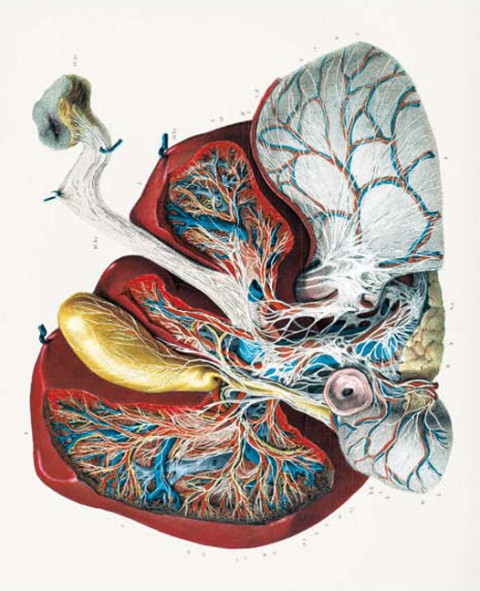
Mapping the human body
A monumental work of the 19th century
Anatomical knowledge was for a long time limited to data gathered from the dissection of animals by Galen (c. 130 - c. 200), a Greek physician who practised in Pergamon and Rome, and whose influence was considerable right up until the 16th century. In the Middle Ages, the only work on anatomy truly worthy of the name was that of Mondino dei Luzzi (c. 1275-1326), written in 1319 and titled Anathomia; taking up the data of Galen, he made some interesting observations on the basis of human dissections he had undertaken in 1315. These works were disseminated in the form of manuscript copies and were very sparsely illustrated. With the invention of printing by Johann Genfleisch, alias Gutenberg (pre-1397-1468) in about 1450, the dissemination of knowledge was to increase by leaps and bounds. The so-called incunabula, in other words works printed before 1500, include the first edition of the Anathomia of dei Luzzi, printed in 1478. The anatomical drawings of Leonardo da Vinci (1452-1519), 228 handdrawn plates of incredible scientific quality, occupy a very marginal place, because they were never edited and were ignored by the scholars of the day. Published for the first time in 1898, they had no impact on the development of the subject. In 1543 the work by André Vésale (1514-1564), De humani corporis fabrica, was published in Basle; it is indisputably the most outstanding book in the whole history of anatomy both in respect of its concept and of its aesthetic qualities. The publication of this work represented a veritable scientific revolution, providing a new vision of Man by replacing Galen's speculative studies and his extrapolations from animal anatomy by systematic dissections of the human body. Vésale's work comprises 25 superb plates separate from the text, and numerous figures within the text, all of them woodcuts, probably the work of Jan Stephan von Calcar, who belonged to Titian's circle. This book, of which a second improved edition appeared in 1555, and which went through several more, had a considerable impact and was copied by numerous authors.
La primera imagen que nos lanzó en la busqueda de este maravilloso Atlas of Human Anatomy and Surgery (re-editado por Taschen) la encontramos ilustrando la portada del fabuloso libro El rival de Prometeo, Vidas de autómatas ilustres con una edición deliciosa muy cuidada a cargo de la no menos fabulosa Marta Peirano.
No hay comentarios:
Publicar un comentario